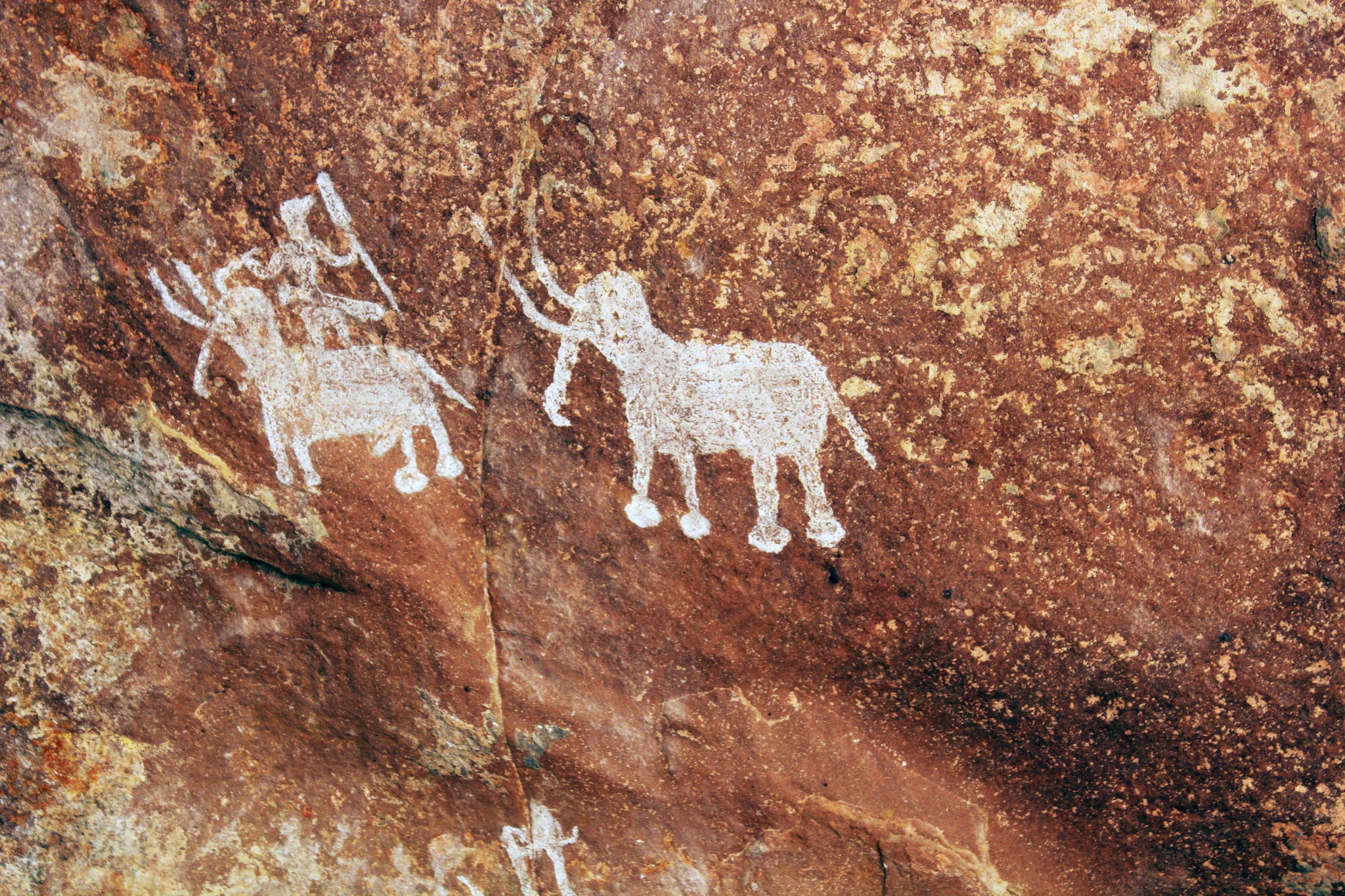Did you know that the Bhimbetka rock shelters in the foothills of the Vindhyan Mountains on the southern edge of the central Indian plateau derives its name from Bhima of Mahabharata and is an alteration of Bhimbaithka, meaning “sitting place of Bhima”? Located in the Raisen District in the Indian state of Madhya Pradesh about 45 km southeast of Bhopal, this space actually consists of seven hills and over 750 rock shelters distributed over 10 km of which some of the shelters were inhabited more than 1,00,000 years ago!
Some of the Bhimbetka rock shelters feature prehistoric cave paintings and the earliest are about 30,000 years old. The themes of the cave paintings range from animals, early evidence of dance and hunting. It is the oldest known rock art in the Indian subcontinent, as well as is one of the largest prehistoric complexes.
Do not confuse these rock paintings as rudimentary. In fact, the paintings, display great vitality and narrative skill, and are categorised into different prehistoric periods. The most fascinating of which is the oldest and it dates back to the Late Paleolithic Period (Old Stone Age) and consists of large linear representations of rhinoceroses and bears. Then there are paintings from Mesolithic (Middle Stone Age) times that are a lot smaller and feature along with animals, human activities. The drawings from the Chalcolithic Period (early Bronze Age) focus on early humans’ ideas of agriculture and the decorative paintings dating to early historical times depicting religious motifs, including tree gods and magical sky chariots.
What makes these caves stand out is that they provide a rare glimpse at a sequence of cultural development from early nomadic hunter-gatherers to settled cultivators to expressions of spirituality. Interestingly, the present-day cultural traditions of agrarian populous inhabiting the villages surrounding Bhimbetka resemble those represented in the paintings.
A visit to the Bhimbetka region will reveal massively sculpted formations in the sandstone rock. On the Bhimbetka site’s hill alone, where the bulk of the archaeological research has been concentrated since 1971, 243 shelters have been investigated, of which 133 contain rock paintings. In addition to the cave paintings, archaeologists have unearthed large numbers of artefacts in the caves and in the dense teak forests and cultivated fields around Bhimbetka, the oldest of which are Acheulean stone tool assemblages. For those who would also like to commune with nature, the complex is surrounded by the Ratapani Wildlife Sanctuary, making it quite a unique experience.
In fact, the shelters were designated a UNESCO World Heritage site back in 2003. It is considered one of the largest repositories of prehistoric art in India.





